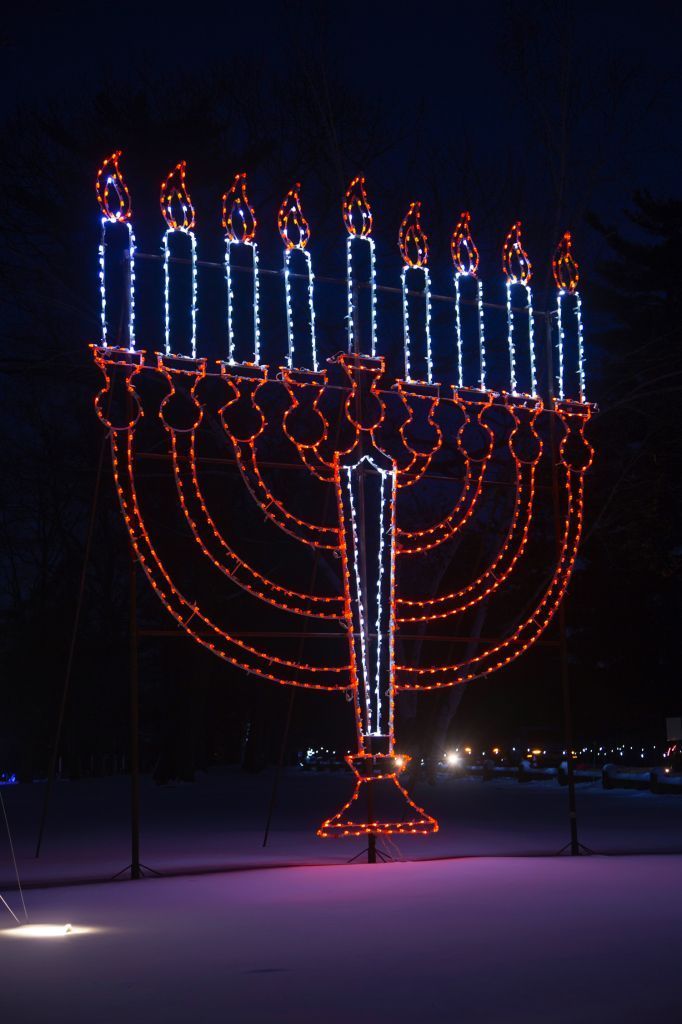

The later record of the making of "new holy vessels" may refer to the manufacture of new candlesticks ( 1%20Maccabees 4:49). Since however the Temple was an enclosed place with no natural light, some means of illumination must have existed.Īlthough apocryphal, the Maccabees record that Antiochus Epiphanes took away the candlesticks (plural) when he invaded and robbed the temple as it was in those days ( 1%20Maccabees 1:21). These are definitely recorded as being taken away to Babylon by the invading armies under the general Nebuzar-Adan ( Jeremiah 52:19) some centuries later.ĭuring the restoration of worship after the captivity in Babylon, no mention is made of the return of the menorah or of any of Solomon's candlesticks, but only of "vessels" ( Ezra 1:9-10). Indeed, there is no further mention at all of the menorah, even in Solomon's temple, as he creates ten candlesticks ( 2%20Chronicles 4:7). However, no mention is made of it during the years that the ark of the covenant was moving about the land in the times of Samuel and Saul. When the Tabernacle is pitched in Shiloh ( Joshua 18:1), it is safe to assume that the menorah was also present. The original menorah was made for the Tabernacle, and is recorded as being present until the Jordan was crossed.

The shape of the menorah bears a certain resemblance to that of Salvia palaestina. Archaeological evidence, however, including depictions by artists who had actually seen the menorah itself, indicates that they were neither straight nor semicircular but elliptical. The branches are often artistically depicted as semicircular, but Rashi and Maimonides (according to his son Avraham) held that they were straight no other Jewish authority expresses an opinion on the subject. The Torah states that God revealed the design for the menorah to Moses. This type of menorah is called a hanukiah in Modern Hebrew.
#My menorah today plus
The Hanukkah menorah therefore has eight main branches, plus a ninth branch set apart for the Shamash (servant) light which is used to start the other lights. Miraculously, the oil burned for eight days which was enough time to make new pure oil. According to the Talmud, after the desecration of the Jewish Temple in Jerusalem, there was only enough sealed (and therefore not desecrated) consecrated olive oil left to fuel the eternal flame in the Temple for one day. The Menorah is also a symbol closely associated with the Jewish holiday of Hanukkah. Main articles: Hanukkah and Menorah (Hanukkah) 40 And see that thou make them after their pattern, which is being shown thee in the mount. 39 Of a talent of pure gold shall it be made, with all these vessels. 38 And the tongs thereof, and the snuffdishes thereof, shall be of pure gold. 37 And thou shalt make the lamps thereof, seven and they shall light the lamps thereof, to give light over against it. 36 Their knops and their branches shall be of one piece with it the whole of it one beaten work of pure gold.

35 And a knop under two branches of one piece with it, and a knop under two branches of one piece with it, and a knop under two branches of one piece with it, for the six branches going out of the candlestick. 34 And in the candlestick four cups made like almond-blossoms, the knops thereof, and the flowers thereof. 32 And there shall be six branches going out of the sides thereof: three branches of the candlestick out of the one side thereof, and three branches of the candle-stick out of the other side thereof 33 three cups made like almond-blossoms in one branch, a knop and a flower and three cups made like almond-blossoms in the other branch, a knop and a flower so for the six branches going out of the candlestick. (Parshat Terumah) Exodus 25:31-40 lists the instructions for the construction of the menorah used in the temple:ģ1 And thou shalt make a candlestick of pure gold: of beaten work shall the candlestick be made, even its base, and its shaft its cups, its knops, and its flowers, shall be of one piece with it. It is said to symbolize the burning bush as seen by Moses on Mount Horeb ( Exodus 3). Lit by olive oil in the Tabernacle and the Temple, the menorah is one of the oldest symbols of the Jewish people. It was used in the ancient Holy Temple in Jerusalem. The menorah ( Hebrew: מְנוֹרָה), is a seven-branched candelabrum which has been a symbol of Judaism for almost 3000 years and is the emblem of Israel. Second Temple period stone tablet from a synagogue in Peki'in, Israel.Ĭoin issued by Mattathias Antigonus c. A reconstruction of the Menorah of the Temple


 0 kommentar(er)
0 kommentar(er)
